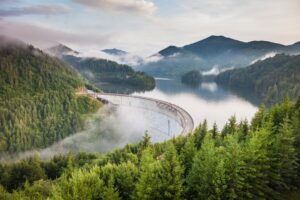Dreaming of a weekend escape that blends history, charm, and breathtaking scenery? Look no further than Romania, a country brimming with enchanting towns that whisper tales of the past and offer a vibrant tapestry of culture. Forget the crowded tourist traps; we’re diving deep into Romania’s most beautiful towns, those hidden gems that promise an unforgettable getaway. Whether you’re a history buff, a nature lover, a foodie, or simply someone seeking a dose of authentic charm, these destinations are sure to capture your heart and inspire your next adventure. From medieval citadels perched on hilltops to colorful villages nestled in verdant valleys, Romania’s most beautiful towns offer a diverse range of experiences, each with its own unique character waiting to be discovered. Prepare to be captivated by cobblestone streets, ornate architecture, and a warmth of hospitality that will make you feel instantly at home.
Uncover Romania’s Most Beautiful Towns for Your Dream Weekend Getaway
Romania, a land steeped in legend and natural splendor, offers a wealth of picturesque towns perfect for a rejuvenating weekend escape. While the allure of Transylvania’s castles often takes center stage, the country’s true magic often lies in its charming, lesser-known urban centers. These are the places where time seems to slow down, where centuries-old traditions are still vibrantly alive, and where every corner turned reveals a new postcard-worthy vista. This guide is dedicated to uncovering these captivating locales, providing you with the inspiration and practical advice needed to plan your perfect Romanian weekend. We’ll explore towns that boast medieval fortifications, vibrant artistic communities, and culinary delights that will tantalize your taste buds. Each destination has been carefully selected for its unique appeal, ensuring a diverse and enriching experience for every traveler. Get ready to be inspired as we journey through Romania’s most beautiful towns, each a testament to the country’s rich history and enduring charm.
Sighisoara: The Crown Jewel of Transylvanian Medieval Charm
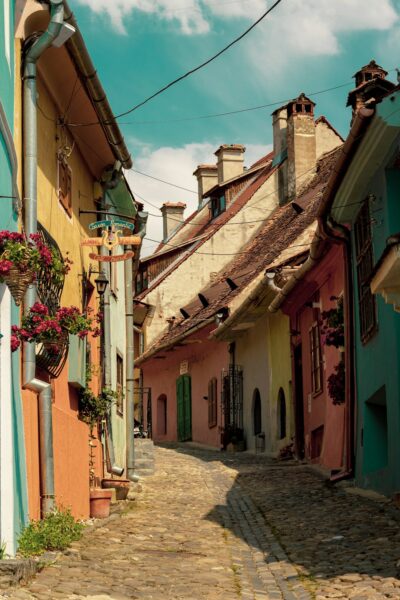
When discussing Romania’s most beautiful towns, Sighisoara is often the first name that springs to mind, and for good reason. This UNESCO World Heritage site is one of the last continuously inhabited medieval citadels in Europe, a living testament to a bygone era. Stepping through its ancient gates is like stepping back in time. The town is a labyrinth of narrow cobblestone streets, pastel-colored houses with red-tiled roofs, and imposing defensive towers, each with its own distinct story. The atmosphere is palpable, a blend of history, romance, and a hint of mystery. It’s a place where you can wander for hours, getting lost in the charm of its architecture and soaking in the centuries of history that permeate its very stones.
A Deeper Dive into Sighisoara’s Appeal
The heart of Sighisoara is its citadel, a fortified complex that has stood for over 800 years. Within these walls, you’ll find a treasure trove of historical landmarks. The most iconic is the Clock Tower, a magnificent 64-meter structure that has guarded the town for centuries. Climb to the top for panoramic views of the surrounding medieval rooftops and the rolling Transylvanian countryside – a truly breathtaking sight. The tower also houses a fascinating history museum, detailing the town’s evolution. Another must-visit is the Birthplace of Vlad the Impaler, the infamous ruler who inspired Bram Stoker’s Dracula. While the connection is more historical than literal, the house itself is a charming restaurant and a significant point of interest for many visitors. Don’t miss the Scholars’ Stairs, a covered wooden staircase dating back to the 17th century, leading to the Church on the Hill. This atmospheric climb is a sensory experience in itself, with the worn wooden steps echoing the footsteps of generations.
The Church on the Hill, a Gothic masterpiece, stands as a sentinel over the town, offering stunning views and a serene interior. Explore the fortified walls, interspersed with defensive towers like the Tailors’ Tower, Cobblers’ Tower, and Tanners’ Tower, each representing a different medieval guild and showcasing the town’s defensive prowess. The vibrant colors of the houses, adorned with flower-filled window boxes, add to the town’s picturesque appeal. Evenings in Sighisoara are magical, with the ancient streets illuminated by soft lamplight, creating an intimate and romantic ambiance. The town square, alive with local artisans selling their crafts and small cafes offering traditional Romanian delicacies, is the perfect place to unwind and absorb the atmosphere.
Practical Tips for Your Sighisoara Weekend
- Getting There: Sighisoara is accessible by train from major Romanian cities like Bucharest, Brasov, and Sibiu. The nearest international airports are in Sibiu (SBZ) and Targu Mures (TGM), both within a reasonable driving distance.
- Accommodation: For an authentic experience, consider staying within the citadel walls. Numerous boutique hotels and guesthouses offer beautifully restored medieval rooms. Booking in advance is highly recommended, especially during peak season.
- What to Eat: Sample traditional Transylvanian cuisine. Look for dishes like sarmale (cabbage rolls), mici (grilled minced meat rolls), and hearty stews. Don’t forget to try the local pastries and kürtőskalács (chimney cake).
- Best Time to Visit: Spring and autumn offer pleasant weather and fewer crowds. Summer is warm and vibrant, but can be busier. Winter can be magical with festive markets, but some attractions may have reduced hours.
- Getting Around: The citadel is best explored on foot. Comfortable walking shoes are essential for navigating the cobblestone streets and inclines.
- Must-Do Activities: Climb the Clock Tower, visit the Birthplace of Vlad the Impaler, explore the Church on the Hill and Scholars’ Stairs, wander through the citadel’s alleyways, and browse local artisan shops.
Sighisoara is more than just a historic site; it’s an experience. It’s a town that invites you to slow down, to appreciate the beauty of preserved history, and to immerse yourself in a truly unique atmosphere. Its compact nature makes it ideal for a weekend getaway, allowing you to explore its many facets without feeling rushed. The sheer beauty and historical significance of Sighisoara solidify its position as one of Romania’s most beautiful towns, a must-visit for any discerning traveler.
Sibiu: A Saxon Gem of Culture and Culinary Delights

Nestled in the heart of Transylvania, Sibiu is a captivating city that effortlessly blends medieval grandeur with a vibrant, modern cultural scene. Its well-preserved historic center, characterized by its large, picturesque squares and distinctive “eyes” on the rooftops, is a testament to its Saxon heritage. Sibiu was a European Capital of Culture in 2007, and this legacy is still palpable, evident in its thriving arts, festivals, and a surprisingly sophisticated culinary landscape. It’s a city that invites exploration, rewarding visitors with charming discoveries around every corner. For those seeking a blend of history, culture, and gastronomy, Sibiu stands out as one of Romania’s most beautiful towns.
Exploring Sibiu’s Enchanting Districts
Sibiu’s historic center is divided into two main parts: the Upper Town and the Lower Town, connected by picturesque staircases and winding streets. The Great Square (Piața Mare) is the city’s pulsating heart, a vast expanse surrounded by stunning Baroque and Renaissance architecture. Here, you’ll find the Brukenthal National Museum, housed in the former palace of Governor Samuel von Brukenthal, which boasts an impressive collection of European art. The adjacent Small Square (Piața Mică) is equally charming, connected to the Great Square by the iconic Liar’s Bridge. Legend has it that the bridge will collapse if someone tells a lie while standing on it – a quirky piece of local lore. The bridge offers lovely views over the Lower Town and the Citadel Walls.
The Council Tower, overlooking the Great Square, provides another opportunity for panoramic city views. Ascending its stairs reveals the intricate layout of Sibiu, with its red rooftops and the distant Carpathian Mountains. The Lower Town, with its more modest houses and fortified walls, offers a different, yet equally captivating, perspective. Wander through its narrow streets, discover hidden courtyards, and admire the remnants of the old fortifications, including the Carpenters’ Tower and the Potters’ Tower. The Evangelical Cathedral, a majestic Gothic structure, dominates the skyline of the Upper Town and houses a crypt containing the tombs of Transylvanian princes and governors.
Sibiu’s unique architectural feature, the “eyes” of the houses – dormer windows that resemble watchful eyes – is a defining characteristic. These were originally designed to ventilate the attics, but they have become a beloved symbol of the city, giving it a distinctive and slightly whimsical character. The city’s cultural vibrancy is evident in its numerous festivals, from the International Theatre Festival to the Christmas Market, which transforms the squares into a magical winter wonderland.
Practical Tips for Your Sibiu Weekend
- Getting There: Sibiu International Airport (SBZ) has direct flights from several European cities. The city is also well-connected by train and bus to other major Romanian cities.
- Accommodation: Sibiu offers a wide range of accommodation, from luxury hotels in historic buildings to charming guesthouses in the Lower Town. Staying near the historic center is recommended for easy access to attractions.
- What to Eat: Sibiu is a culinary hub. Don’t miss the opportunity to try ciorbă (sour soups), mămăligă (polenta), and local specialties like pastramă de Sibiu (air-dried mutton). The city boasts excellent restaurants and traditional taverns.
- Best Time to Visit: Spring (April-May) and autumn (September-October) offer pleasant weather for exploring. The Christmas Market in December is a major draw, making winter a magical, albeit colder, option.
- Getting Around: The historic center is best explored on foot. Public transport is available for reaching areas outside the center.
- Must-Do Activities: Walk across the Liar’s Bridge, climb the Council Tower, explore the Great and Small Squares, visit the Brukenthal Museum, discover the Lower Town’s fortifications, and enjoy the vibrant atmosphere of the historic center.
Sibiu’s charm lies in its harmonious blend of history, culture, and a lively contemporary spirit. It’s a city that invites you to get lost in its picturesque streets, to savor its culinary offerings, and to soak in its rich cultural heritage. As one of Romania’s most beautiful towns, Sibiu promises a weekend filled with discovery and delight, leaving you with lasting memories of its unique Saxon allure.
Brasov: The Gateway to Transylvania’s Majestic Landscapes

Brasov, a city cradled by the Carpathian Mountains, is often considered the gateway to Transylvania’s most iconic landscapes and historical sites. Its medieval charm is undeniable, with a beautifully preserved Old Town centered around the imposing Black Church and the Council Square. But Brasov is more than just its historic core; it’s a dynamic city that offers a perfect blend of urban sophistication and access to breathtaking natural beauty. For a weekend getaway that combines historical exploration with the promise of mountain adventures, Brasov is an exceptional choice among Romania’s most beautiful towns.
Discovering Brasov’s Medieval Heart and Mountain Vistas
The heart of Brasov is undoubtedly the Council Square (Piața Sfatului), a grand pedestrianized plaza surrounded by colorful Baroque buildings. The centerpiece is the Council House, which now houses the Brasov County Museum of History. Dominating the skyline is the magnificent Black Church (Biserica Neagră), the largest Gothic church in Eastern Europe. Its name comes from the fire of 1689 that blackened its walls. Inside, you can admire its vast collection of Anatolian carpets, salvaged from the fire and now a unique testament to its history. Climbing the narrow stairs to the top of the Old Town Hall Tower offers spectacular views of the square and the surrounding red-tiled roofs.
Wander through the charming narrow streets radiating from the square, such as Strada Sforii (Rope Street), one of the narrowest streets in Europe, a quirky and photogenic spot. The historic fortifications that once protected the city are still visible, with remnants of towers like the Black Tower and the White Tower offering excellent vantage points for city panoramas. A particularly rewarding experience is taking the cable car up Mount Tampa, which overlooks the city. The summit offers breathtaking panoramic views of Brasov and the surrounding mountain range, a perfect spot for a leisurely stroll or a picnic.
Brasov’s strategic location makes it an ideal base for exploring nearby attractions. Just a short drive away lies the legendary Bran Castle, famously associated with Dracula, and the equally impressive Peleș Castle in Sinaia, a stunning architectural masterpiece. The nearby medieval towns of Râșnov and Prejmer also offer fascinating historical insights.
Practical Tips for Your Brasov Weekend
- Getting There: Brasov has its own international airport (GHAV), though flights are less frequent. Alternatively, you can fly into Bucharest’s Otopeni Airport (OTP) and take a train or bus to Brasov (approx. 2.5-3 hours).
- Accommodation: Brasov offers a wide range of hotels, guesthouses, and apartments, many located in or near the historic Old Town. Staying close to the Council Square provides easy access to the main attractions.
- What to Eat: Enjoy hearty Romanian cuisine. Brasov is known for its traditional restaurants offering dishes like gulaș (goulash), ciolan cu varză (pork knuckle with cabbage), and various grilled meats. Try local craft beers and pastries.
- Best Time to Visit: Spring and autumn offer pleasant weather for city exploration and hiking. Summer is warm and lively, with opportunities for outdoor activities. Winter is popular for its proximity to ski resorts and its charming Christmas market.
- Getting Around: The Old Town is best explored on foot. For Mount Tampa, use the cable car. Public transport (buses and trams) is available for reaching other parts of the city and for day trips to nearby attractions.
- Must-Do Activities: Explore the Council Square and the Black Church, walk along Strada Sforii, visit the Black and White Towers, take the cable car up Mount Tampa for panoramic views, and consider day trips to Bran Castle and Peleș Castle.
Brasov truly embodies the spirit of Transylvania, offering a captivating blend of medieval history, vibrant urban life, and stunning natural beauty. Its accessibility, diverse attractions, and the sheer charm of its old town make it a standout among Romania’s most beautiful towns, perfect for a weekend escape that satisfies both the adventurer and the history enthusiast.
Sinaia: The Pearl of the Carpathians and Royal Residences
Perched high in the Prahova Valley, Sinaia is a mountain resort town renowned for its stunning natural beauty and its magnificent royal residences. Often referred to as the “Pearl of the Carpathians,” Sinaia offers a unique blend of alpine charm, historical grandeur, and outdoor adventure, making it a captivating destination for a weekend getaway. Its elevated setting provides breathtaking vistas, while its opulent castles whisper tales of Romanian royalty and a bygone era of elegance. For those seeking a picturesque escape with a touch of imperial splendor, Sinaia is a gem among Romania’s most beautiful towns.
Immersing Yourself in Sinaia’s Royal Heritage and Natural Splendor
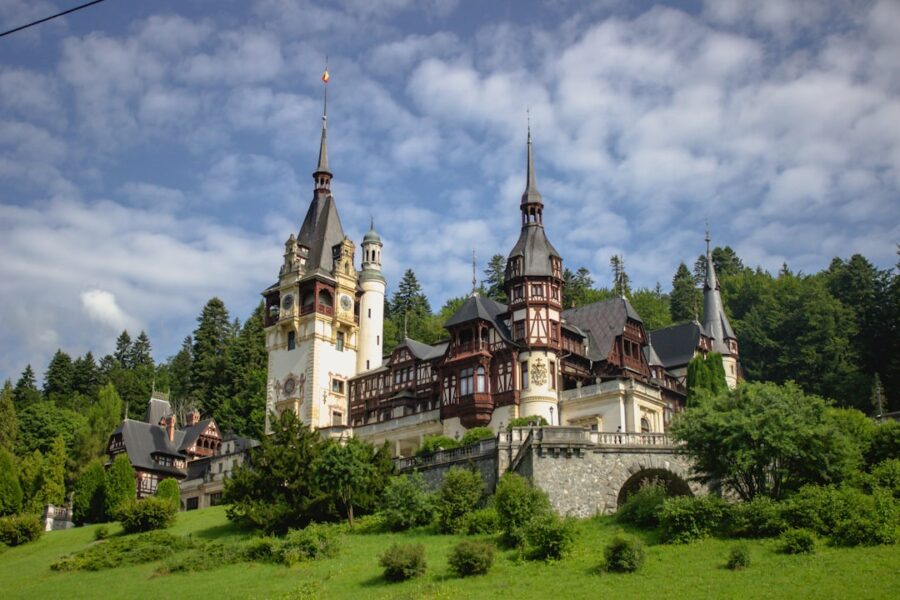
The undeniable star of Sinaia is Peleș Castle, a masterpiece of German Renaissance architecture and one of the most beautiful castles in Europe. Built as a summer residence for King Carol I of Romania, it served as the home of the Romanian royal family until 1947. Its intricate woodwork, stained-glass windows, and richly decorated interiors, featuring a diverse array of styles from Renaissance to Baroque, are simply mesmerizing. Wandering through its opulent rooms, including the Throne Room and the Music Room, provides a fascinating glimpse into the lavish lifestyle of the monarchy. Adjacent to Peleș Castle is the smaller, more intimate Pelișor Castle, built for King Ferdinand and Queen Marie, showcasing Art Nouveau influences and beautiful frescoes.
The town itself is named after the Sinaia Monastery, a significant Orthodox religious site founded in the 17th century. The monastery, with its two distinct churches, offers a peaceful retreat and a glimpse into the spiritual heart of the region. The monastery’s courtyard is a tranquil space, and the old church houses ancient icons and religious artifacts. Sinaia’s location in the mountains makes it a popular destination for hiking and outdoor activities. The surrounding Bucegi Mountains offer numerous trails for all levels of hikers, leading to stunning viewpoints and natural attractions like the Babele and the Sphinx rock formations (accessible via cable car from Bușteni, a neighboring town).
The town’s main street, Calea Victoriei, is lined with charming villas, hotels, and restaurants, reflecting its history as a fashionable resort for the aristocracy. The crisp mountain air, the scent of pine forests, and the dramatic mountain scenery create an invigorating atmosphere. Even if you’re not an avid hiker, a leisurely stroll through the town, enjoying the architecture and the views, is a deeply satisfying experience.
Practical Tips for Your Sinaia Weekend
- Getting There: Sinaia is easily accessible by train from Bucharest (approx. 1.5-2 hours) and Brasov. The nearest airport is Bucharest Otopeni (OTP).
- Accommodation: Sinaia offers a range of hotels, from luxurious spa resorts to charming guesthouses and pensions. Many hotels offer stunning mountain views.
- What to Eat: Enjoy traditional Romanian mountain cuisine. Look for hearty dishes like mămăligă cu brânză și smântână (polenta with cheese and sour cream), grilled meats, and local mushroom dishes. Many restaurants offer terraces with spectacular views.
- Best Time to Visit: Summer (June-August) is ideal for hiking and enjoying the mountain scenery. Winter (December-March) is popular for skiing and snowboarding at the nearby resorts. Spring and autumn offer beautiful colors and fewer crowds.
- Getting Around: The main attractions, including Peleș Castle and the monastery, are within walking distance of the train station and many hotels. For exploring further afield or reaching hiking trails, taxis or local buses are available.
- Must-Do Activities: Visit Peleș Castle and Pelișor Castle, explore Sinaia Monastery, take a cable car ride for mountain views, and enjoy hiking in the Bucegi Mountains.
Sinaia’s blend of royal history, architectural splendor, and breathtaking mountain landscapes makes it a truly special destination. It offers a refined yet adventurous escape, solidifying its place as one of Romania’s most beautiful towns, perfect for a weekend that feels both luxurious and invigorating.
Viscri: A Saxon Village Frozen in Time
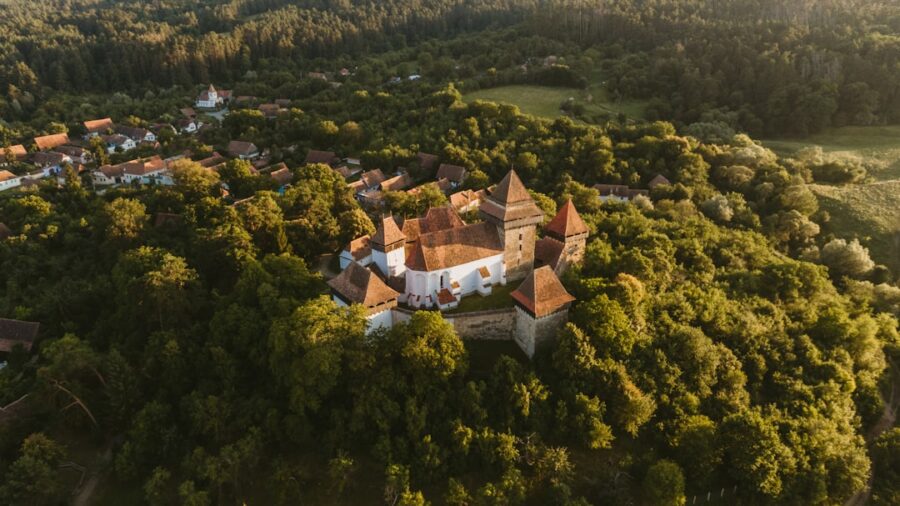
For an authentic glimpse into rural Romanian life and the enduring charm of Saxon heritage, the village of Viscri is unparalleled. This picturesque village, also a UNESCO World Heritage site, is a living museum, where traditional architecture, horse-drawn carts, and a slow pace of life are still very much the norm. Its fortified church, standing proudly on a hilltop, is a symbol of its resilience and history. Viscri offers a serene and deeply immersive experience, a stark contrast to the bustle of city life, making it a unique and beautiful destination among Romania’s most captivating towns and villages.
Experiencing the Tranquility and Authenticity of Viscri
The defining feature of Viscri is its Fortified Church, a UNESCO World Heritage site that has stood guard over the village for centuries. This impressive structure, with its thick defensive walls, towers, and bastions, was built by the Saxon community in the 12th century and fortified over time. Climbing to the top of the church tower offers a commanding view of the village’s red-tiled roofs, scattered amongst rolling green hills dotted with sheep. The interior of the church retains its simple, austere beauty, a reflection of its Protestant origins.
The village itself is a collection of beautifully preserved Saxon houses, many of which have been meticulously restored by the Mihai Eminescu Trust and other organizations, often with the involvement of Prince Charles, who has a personal affection for Viscri. These houses, with their whitewashed walls, blue painted doors and window frames, and thatched or tiled roofs, create a harmonious and incredibly picturesque streetscape. Many of these houses are now guest houses, offering visitors the chance to stay in a truly authentic setting.
Life in Viscri moves at a gentle pace. You’ll see locals tending their gardens, working their fields with traditional tools, and passing the time chatting in the village square. The simplicity and authenticity of the experience are what make Viscri so special. It’s a place to disconnect from the modern world and reconnect with nature and tradition. Engage with the locals, sample homemade jams and cheeses, and perhaps even try your hand at traditional crafts like wool spinning or pottery.
Practical Tips for Your Viscri Weekend
- Getting There: Viscri is located between Sighisoara and Brasov. The nearest train stations are in Rupea or Sighisoara. From there, you’ll need to arrange a taxi or private transfer, as public transport directly to the village is limited. The final approach to Viscri involves driving on an unpaved road.
- Accommodation: The best way to experience Viscri is to stay in one of the restored Saxon houses that have been converted into guesthouses. These offer a unique opportunity to immerse yourself in the village’s atmosphere. Book well in advance, as accommodation is limited and highly sought after.
- What to Eat: Enjoy simple, home-cooked meals made with fresh, local ingredients. Expect delicious jams, honey, cheeses, freshly baked bread, and traditional Romanian dishes prepared with a rustic touch.
- Best Time to Visit: Late spring, summer, and early autumn offer the most pleasant weather for exploring the village and surrounding countryside. The village is particularly beautiful when the meadows are in bloom.
- Getting Around: The village is small enough to explore entirely on foot. Comfortable walking shoes are essential, especially for navigating the unpaved paths.
- Must-Do Activities: Visit the Fortified Church, explore the village streets and admire the Saxon houses, interact with locals, try local produce, and simply soak in the peaceful atmosphere.
Viscri offers a profound sense of peace and a connection to a way of life that is rapidly disappearing in many parts of the world. Its preserved beauty and authentic charm make it a truly special place, and a highly rewarding experience for those seeking a deeper understanding of Romania’s rich cultural heritage. It is, without question, one of Romania’s most beautiful towns, offering a tranquil and memorable escape.
Cluj-Napoca: The Vibrant Heart of Transylvania
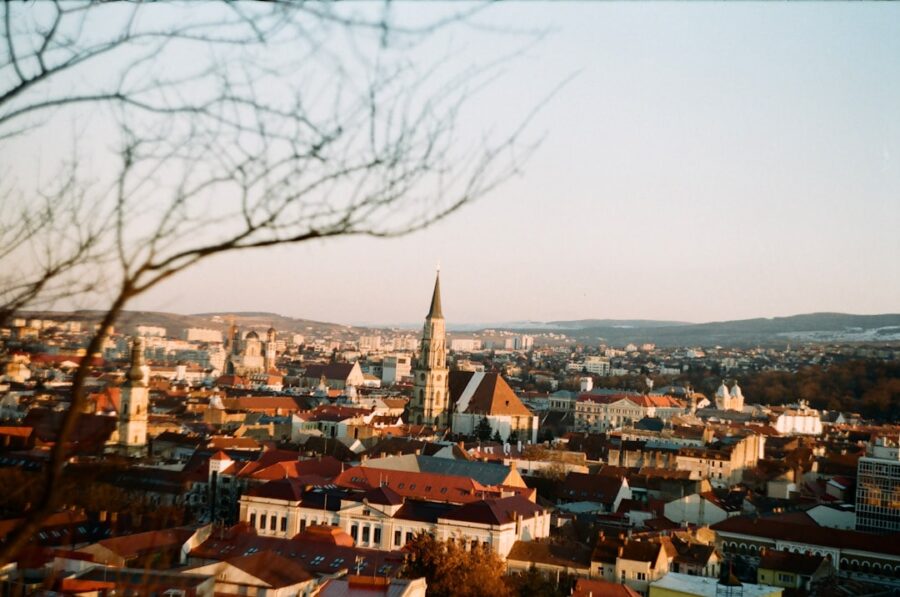
While often recognized as a bustling university city and a hub for technology and innovation, Cluj-Napoca also possesses a captivating charm and a rich historical tapestry that earns it a spot among Romania’s most beautiful towns. Its lively atmosphere, combined with a stunning array of architectural styles, vibrant cultural events, and a burgeoning gastronomic scene, makes it a dynamic and engaging destination for a weekend getaway. Cluj-Napoca offers a modern yet historically grounded experience, appealing to those who appreciate both urban sophistication and historical depth.
Exploring Cluj-Napoca’s Lively Squares and Cultural Offerings
The heart of Cluj-Napoca is its magnificent central square, Union Square (Piața Unirii), dominated by the imposing Gothic architecture of the St. Michael’s Church. This vast, pedestrianized square is a hub of activity, surrounded by colorful buildings showcasing Baroque and Art Nouveau influences. The statue of Matthias Corvinus, a prominent

